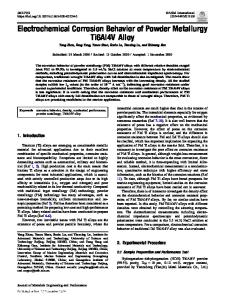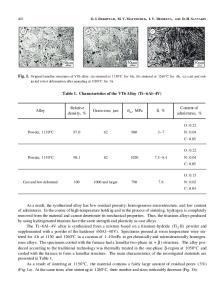Effect of Mass Fraction of Dolomite on the Foaming Behavior of AlSiCu Alloy Foam by Powder Metallurgy Route
- PDF / 797,493 Bytes
- 6 Pages / 593.972 x 792 pts Page_size
- 2 Downloads / 352 Views
N
METALLIC foams have unique properties, such as low density, energy absorbing capability, and low thermal conductivity. A recent research study focused on these foams, and many processes have been proposed for their manufacture. Among these processes, the use of titanium hydride (TiH2) as a foaming agent is commonly used in melt processing and powder metallurgy (PM). Alporas foams are produced by a typical melt processing route,[1] in which foams are melted with calcium as a viscosity-enhancing additive and a TiH2 foaming agent. The Fraunhofer method is a typical PM route[2] that involves the hot extrusion of aluminum matrix powder and a TiH2 to make a precursor, which is then heated in a mold to foam for near-net shaping. TiH2 is a commonly used foaming agent because of its decomposition temperature, which is close to the melting temperature of aluminum alloys. However, TiH2 is expensive and dangerous to handle. Therefore, a cheaper and safer foaming agent is required. Calcium carbonate (CaCo3) and dolomite [CaMg(CO3)2], which are cheap and very stable alternatives to TiH2, have been used as a TAKUYA KOIZUMI and KOTA KIDO, Engineers, and KAZUHIKO KITA, Vice President, are with the Machinery and Engineering Group, YKK Corporation, Kurobe 938-8601, Japan. Contact e-mail: [email protected] KOICHI MIKADO, Engineer, is with the Fastening Products Group, YKK Corporation. SVYATOSLAV GNYLOSKURENKO, formerly Postdoctoral Student, Institute of Multidisciplinary Research for Advanced Materials, Tohoku University, Sendai 980-8577, Japan, is now Professor, Physico-technological Institute of Metals and Alloys, NAS Ukraine, Kiev, Ukraine. TAKASHI NAKAMURA, Professor, is with the Institute of Multidisciplinary Research for Advanced Materials, Tohoku University. Manuscript submitted May 27, 2011. Article published online July 7, 2012 METALLURGICAL AND MATERIALS TRANSACTIONS A
foaming agent in the melt processing route.[3–7] Nakamura reported that foam by CaCO3 in the melt route showed finer cell structure and higher plateau stress than foam by TiH2. CaCO3 stabilizes the cell wall to prevent cell growth by oxidation. The foam by CaCO3 does not have a brittle intermetallic compound in the cell wall.[5] Recently, those carbonates were also applied as a foaming agent in the PM route and achieved fine cell structure.[8,9] In the previous study, we reported that dolomite is a suitable foaming agent for AlSiCu alloy in the PM route, because a fine and homogeneous cell structure can be obtained.[10,11] To control the cell structure, it is important to clarify the effect of the mass fraction of dolomite on the foaming behavior in the PM route. Recently, high-resolution X-ray tomography was used for the observation of foaming[12] and the characterization of foams.[13] By in-situ observation, foaming behavior can be observed directly without the effect of solidification shrinkage and gas precipitation. In the present study, the phenomenon and principle of foaming by dolomite as a foaming agent for AlSiCu alloy were investigated with a high-temp
Data Loading...











